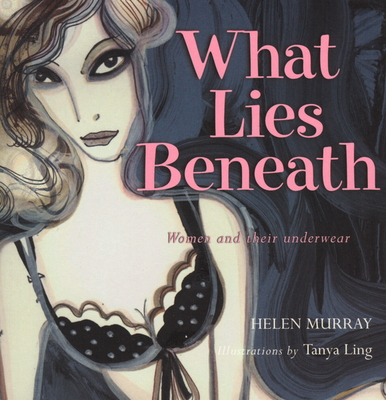What Lies Beneath
Sally Richardson reviews What Lies Beneath: women and their underwear by Helen Murray, Mercier Press, ISBN 1 85635 477 6, £10.65/€14.99 pbk

PRODUCED IN the square format typical of gift books, and printed on sugar pink paper with engagingly frothy illustrations by Tanya Ling, this attractive book could so easily have turned out to be little more than a frivolous romp through familiar 'nudge-nudge wink-wink' territory.
But this is a serious subject. Women are literally shaped by their underclothing and what shape that happens to be is governed by their desires and aspirations, and by the demands society makes on them. Freedom or constraint in society is often mirrored by what women wear underneath, and as well as being worn for hygiene and warmth, underwear can be expressive of social status and sexual allure.
Helen Murray takes us through the changing shape of women over the past hundred years or so and how it has been affected and reflected by prevailing social and political attitudes. Her analysis is often perceptive. She says of the childlike shape favoured in the 1960s that "in the context of the significant developments taking place within the women's movement... these fashions seem like a form of appeasement to a society unnerved by their advancement."
The market economy played its part too. The ideal shape "was not the female form Mother Nature had intended, but something that could and ought to be purchased". However, as underwear became more minimal, the controlling aspect was taken over by diet and exercise. Magazines started to cover the subjects of weight-loss and exercise as early as the 1920s.
However, I have a few criticisms. There are several clunking factual errors in the book, and a few way-off-the-mark interpretations. It is not true that early 20th Century Irish women republicans were only interested in the liberation of their country and not of their sex, as even a casual glance at what many of them said, wrote and did will show.
The structure of the book is also problematic. Its division into chapters covering Shape, Fashion, Politics and Culture leads to much repetition as these themes are all interrelated. A straightforwardly chronological approach might have worked better.
However, Helen Murray and Mercier should be congratulated for producing a serious piece of social history in an attractive package for the general reader. What lies beneath the pretty cover of this book is a good deal of research and some intelligent analysis. Fun and informative.
Connolly Association, c/o RMT, Unity House, 39 Chalton Street, London, NW1 1JD
Copyright © 2006 SAlly Richardson

